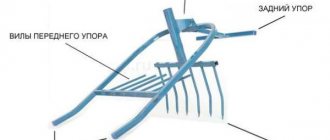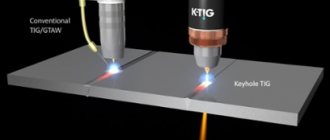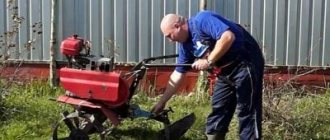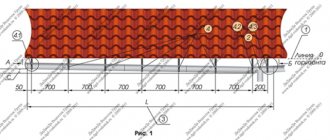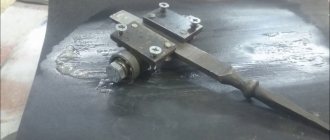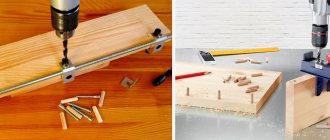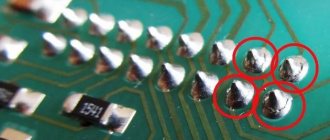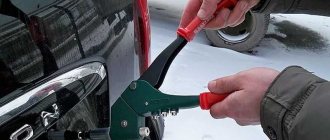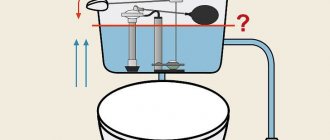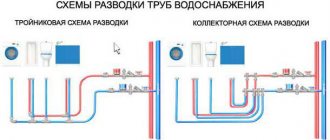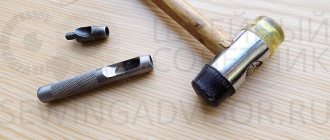When performing construction and repair work, it often becomes necessary to make a hole in a concrete, stone or brick wall. An impact hammer with a special cutting tool - a concrete drill - will help with this.
Since concrete is a fairly strong and dense material, you need to drill a hole in it with a special drill, making not only rotational, but also impact movements. To withstand such heavy loads, the concrete drill is made from high-quality material using an industrial method.
The quality of the drill used affects the life of the hammer drill
What does a drill consist of?
Drills for hammer drills for concrete have several important parameters:
- landing shank;
- spiral rod;
- cutting part.
The shank is the part of the drill that secures it into the clamping hole of the hammer drill.
They differ in the number of edges, the size of the recesses and are divided into five main types:
- 3-sided;
- 4-sided;
- 6-sided;
- cylindrical;
- SDS.
Main types of drill shanks for hammer drills
Depending on the type of impact machine chuck, select the appropriate type of shank. The clamping mechanism transmits torque to the drill under heavy loads, so the parts must be securely and tightly secured. Pay attention to the type and size of your hammer drill chuck and buy drills only with a suitable shank.
The spiral shank is the main part of the drill that has one or more spiral flutes. Waste chips and sludge are discharged through them; they can have varying degrees of curl. Every manufacturer wants to create a drill that creates holes as quickly as possible, while remaining wear-resistant and durable. The more twisted the design of the drill, the faster it will punch a hole, but the less strong and durable the cutting element will be. Therefore, manufacturers are experimenting with the composition of the material and the shape of the drill bit, balancing between durability and productivity of their products.
The cutting part also differs in the shape and number of cutting plates. This part of the drill begins the drilling process and should be the first to cut into the concrete or stone surface. It is this that punches the hole, not the spiral rod. A drill is a cross between a drill and a chisel. Some options can be sharpened at an angle and have different groove radii.
What you need to know before purchasing
Regardless of the type of hand tool you plan to purchase, you need to consider several basic parameters:
- cutting edge diameter - it must correspond to the hole in the soil; it is recommended to select a blade with dimensions 5 mm larger than the hole;
- characteristics of the holes, which allows you to determine the required set of tools, since it is possible to purchase an excavation drill with several blades for drilling in different conditions, as well as with additional rods for extending the structure.
If you plan to buy a motorized tool, you need to take into account the parameters of the mechanism: power level, operating modes.
When purchasing, you should first of all pay attention to such manufacturers as Hitachi, Husqvarna, Stihl - these are well-established companies
When the task is to rent manual drilling equipment, you need to rely on the volume of expected work (number of holes, soil characteristics).
Drills and drills: what is their difference
A drill and a drill are cutting tools. They help make cylindrical recesses or through holes. They differ only in the surface they work with. If we are talking about dense, non-shock-absorbing surfaces such as stone, concrete or brick, then, as a rule, this is a drill. Drills are available for wood, plastic, and metal. Metal, although a fairly dense and durable material, is springy. Therefore, they work with it using metal drills.
Crowns, drills and drill bits for concrete
This is not to say that drills are not drills. Drills are much stronger than drills, and they are used in impact or non-impact hammer drills. Drill bits are used in drills. Drills can have a head with different edges and several cutting inserts. Some drills have special geometry that helps keep the element in the center of the recess.
Drills and augers available on the market today can be classified as follows::
- metal drill (made from a special alloy that has high strength and can quickly cut metal surfaces);
- wood drill (distinguished by the presence of a self-centering head; for wide holes, drills have a feather shape);
- drill for brick and concrete (elements have a reinforced insert, designed for impact modes);
- earth drill for a hammer drill (an element for drilling holes and holes in the ground).
How to choose the right drill bit for a hammer drill
A correctly selected drill will not only make your work easier, but will also extend the life of the hammer drill. After all, the faster and better the drill drills holes, the less stress the impact equipment will experience.
The first thing you need to pay attention to when purchasing hammer drill elements is what material the drills are intended for. You cannot drill into concrete using an element for wooden surfaces, just as it is not recommended to use a drill for concrete on soft and pliable walls. You can choose hammer drills for metal, concrete, stone, wood, plasterboard, and ceramics.
How to choose the right ceramic drill
The next important parameter is the type of shank. As noted above, it must match the size of the cartridge. Today, the most popular standards are drills of the SDS plus type (diameter 10 mm) and SDS max (diameter 18 mm). The second type of shank is used in professional and more powerful models of rotary hammers.
Depending on the depth of the holes, drills are divided into:
- screw;
- spiral;
- flat.
An auger drill for a hammer drill is capable of creating deep holes. It has a self-sharpening pobedit tip. These drills are designed to work with heavy and very dense surfaces.
Spiral drills can also create deep holes, but with a small diameter. They are indispensable for fastening and installation/dismantling work (for example, they are used to install air conditioners and heating radiators).
Flat drills are quite hardy and are designed for shallow holes. They have a less twisted spiral, so the sludge is discharged slowly. You will appreciate the flat angle drill bits for demanding work.
How to choose the right garden auger?
Purchasing such equipment is a matter of having a competent understanding of the tasks for which it will be used. The speed and quality of the work performed, as well as its practicality, will depend on the right choice. First of all, you need to pay attention to:
- A cutter or a spiral - for what scale of work it will be needed, on what kind of soil it will work;
- Choosing the type of engine - if a large amount of work is not expected, then it is better to give preference to manual models, otherwise, to achieve quality and speed, motor drills are suitable;
- The presence of a container for collecting excavated soil will significantly increase the service life.
Drilling holes in the ground is not an easy process and must be based on the volume of work. Cheap models are suitable for one-time operations; large-scale production will require more expensive models.
Cost of garden drills
Naturally, when purchasing a garden auger, any gardener wants the equipment to last as long as possible, and besides, it will require expensive repairs. Based on these premises, it is always better to focus on the “golden mean”, that is, purchase a good quality instrument, but at the same time, so that its cost is not too expensive.
Today's market is quite widely represented by both domestic and foreign manufacturers. For example, the Shtil brand is distinguished by high safety performance during work, excellent build quality, and excellent ergonomics. The average cost of such equipment is within 12,000 rubles.
Motor drills from Hitachi, another leading brand on the market, are also within these price ranges. At the same time, we should not lose sight of Chinese manufacturers, who in the current period are quite capable of providing a good price/quality ratio. Here you can pay attention to the “Champion” brand.
American brands in this market attract the attention of potential buyers not only with their renowned quality and reliability, but also with good performance indicators along with economical fuel consumption. Their price starts from 13,000 rubles.
Garden motor drills use simple and at the same time effective technology. In terms of labor intensity, they are qualitatively different from their manual counterparts.
Categories of drill bits
When working with concrete surfaces, you have to make holes of different lengths, depths, widths and shapes. Therefore, the cutting elements also have their own variety. In addition to drills and drills, you can use crowns.
Concrete drills SDS +
They are a glass with pobeditov or diamond teeth and a centering drill. Such elements allow you to create a wide and regular-shaped hole. The diameter of the crown can be in the range of 35–120 mm. They do an excellent job of cutting out recesses for sockets or creating air duct openings. Like drills, crowns can be impact or unimpacted.
Another interesting assistant in creating recesses is chisels. They do a good job of removing tiles, creating grooves for wiring, and widening window or door openings. To work with them, the hammer drill should be set to impact mode without rotation. Chisels can be in the form of a pike, a crowbar, or have a chisel-shaped or grooved end.
Subtleties of working with a drill
It would be useful to once again recall the main points that must be observed when working with a drill:
- Drills should be used for their intended purpose. If the drill is intended for a metal hammer drill, then we use it specifically in the hammer drill and specifically for working with metal surfaces. Conscientious manufacturers always indicate the purpose on the packaging: for granite, reinforced concrete, brick, etc. They have different inserts, tips and profiles. Don't neglect this information.
- Do not use a cutting element if the shank is not your type. You can not only damage the equipment, but also damage the drill. Not to mention that the fixation of the two parts will be unreliable. If you still need to use an SDS-plus drill on a professional hammer drill, use a special adapter. But not the other way around: it is absolutely forbidden to use SDS-max drills on household models. They have different power requirements.
Breach drill Bosch SDS Max 65x450 mm - Check the serviceability of the impact equipment chuck. If you notice any play or mechanical wear, replace the chuck immediately.
- Don’t forget about lubricant: it should be applied to the drill shank before starting work to reduce heating of the part.
- The hammer drill operates under high load conditions, so take regular breaks. It is better to remove the drill from the hole every 10 seconds. It will not heat up as much and will last longer.
- Keep your work straight. If you are tired, don't work too hard. Give yourself a break and a break. After all, if the hammer drill is moved even slightly to the side from the working hole, the drill can instantly break.
- Try not to allow the drill to come into contact with reinforcement or metal mesh. This can create cracks and burrs on the drill, which will damage the cutting tool at the most inopportune moment.
After using the hammer drill, clean it with a dry brush to remove dust and working husks. Under no circumstances should the tool be washed so as not to provoke corrosion of electrical equipment. If the drill becomes bent or dull during operation, it cannot be restored. The drill will have to be replaced with a new one.
By following these recommendations for the operation of hammer drills, you will extend the service life of the equipment and create the safest conditions for repair work.
What are the types of drills?
They may have quite different structural elements, but their main parts will be the same. These include: control handle, support rod, cutting base. These parts are sufficient to effectively complete gardening tasks, from constructing outbuildings to planting crops.
Which soil drilling tool to choose is a question that plagues gardeners. Despite the variety of models on the market, they can all be classified into a certain general classification:
- Mechanical type (very simple and work due to human muscular strength);
- Gasoline type (they have a motorized version and run on a fuel engine);
- Electric drills (work is carried out using an electric drive);
- Hydraulic type (they are a professional tool, used for work on an industrial scale, and are not suitable for amateur gardeners).
The best option today are gasoline models with manual control, due to their compactness and relatively low energy consumption during use. In addition, they are not only easy to operate, but also, due to their powerful motor, they can easily cope with drilling particularly difficult types of soil, making holes up to 3 meters deep.
The electric drill is considered a direct competitor to the gasoline drill. It is less noisy during operation, but to use it you will need to be close to a power source (electrical outlet), which is not always possible and significantly limits the range of the equipment.
The simplest are mechanical soil drills, which are distinguished by their particularly simple design. They are a metal tube, at one end of which there is a control handle, and at the other - a two-bladed cutter, with the help of which drilling is carried out. Reliability is achieved through simplicity, however, only small holes can be made using such equipment.
In the range of mechanical tools there are also “big brothers”, characterized by the complexity of their design. In them, the cutter is removable, which allows you to vary the attachments depending on the required size of the hole. The set may include several sized cutter attachments. In addition, these models may have a telescopic rod, which allows you to adjust the height of the tool itself to suit its user.
Also, in the family of mechanical samples there are also screw models. What distinguishes them from those described above is the presence not of a plastic cutter, but of a solid auger knife. They provide a faster pace of work, since the auger can cut out a fairly large volume of earth in one turn.
Areas of application for garden augers
The simplicity of the design, which is inherent in the garden hand auger, leaves most gardeners bewildered. Most consider it an ineffective garden tool. However, this tool can easily cope with many specialized jobs, such as:
- Drilling the soil for the purpose of installing any supports.
- Construction of holes for planting trees, shrubs and other plantings.
- Loosening the soil in order to provide oxygen to agricultural plants, as well as to feed them.
- Arrangement of small wells or compost.
- When constructing outbuildings, he can perfectly drill holes for installing a columnar foundation.
It can also be easily used for laying tunnels with a slope, which can be intended for laying various communications - from drainage to ventilation systems.
In today's market it is possible to find specialized models. An example is the Tornado model line, the tools from which do an excellent job of drilling soil full of small stones or gravel and even construction waste. They are a kind of hybrid of a fork-shaped and plate-shaped instrument.
General disadvantages and advantages of existing models
Advantages:
- Relatively low cost;
- Lightweight and compact;
- Freedom to carry;
- Maneuverability and the ability to do it yourself without using a professional tool.
Flaws:
- Manual equipment requires significant muscular strength;
- Fuel models can significantly hit the pocketbook due to gasoline costs;
- Electric models have an extremely limited range and require constant presence near a source of electricity.
Operating and maintenance procedures
When using any model of drill, before starting work, you need to help the tool a little by loosening the ground in the place where the holes are drilled. This will be very helpful when you need to get to a decent depth.
These simple actions reduce the load on the cutting part, which will allow you to keep this element of the tool longer without unevenness and burrs. Depending on the model, some cutting parts will have to be constantly sharpened, and their surface coated with special anti-corrosion paint. In general, after each use it is recommended to thoroughly clean the drill itself and its components from dirt.
For motorized types of equipment, the maintenance procedure will be more difficult. First of all, this concerns the maintenance of the engine mechanism, be it electric or motor drill. All its mechanisms must be kept clean and cleaned after each use in order to avoid damage to its moving parts. In relation to electrical equipment, it is necessary to ensure stable moisture protection during operation, and for motorized equipment, it is necessary to use reliable types of oil and fuel.
The ambient temperature also plays a big role: it is better not to use electric tools in the rain or at sub-zero temperatures. And motorized versions of tools should not be used immediately after moving them from a warm place to freezing cold.
